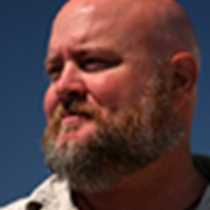Boca de Soledad and La Entrada
Our second morning at Boca de Soledad proved to be a fruitful one, as anyone could tell by looking at the smiling faces on board the Zodiacs as they returned to the Sea Bird. Curious baby gray whales and behemoth mothers approached our inflatable boats and engaged in some human-watching, which made everyone’s day. Once again, the gray whales gave us the opportunity to admire their grace and sheer beauty before we raised anchor and sailed south through the Hull Canal, guided by the expert hands of our pilot, Alejandro Camacho. After enjoying a delicious lunch on deck, numerous bird species, as well as the occasional coyote, were seen by keen birdwatchers as our ship slowly cruised among mangroves and sand dunes.
Once in open waters again, the Sea Bird encountered huge flocks of birds at La Entrada, between Magdalena and Santa Margarita islands. California gulls too numerous to count, Heermann’s gulls, brown pelicans, terns and several whales at a distance gave life to the whole area. A plankton net, promptly lowered by always-ready naturalists Pat Druckenmiller and Bryan Gates, showed us the reason for the feeding frenzy around the ship: small shrimp-like crustaceans commonly known as krill (magnified photo above). Although smaller than their more famous relatives from Antarctic waters, the several species of krill from the northeast Pacific are also very important members of the ocean’s food chain, which eventually reaches its apex with such giants as fin, blue and killer whales.
Shortly after leaving La Entrada and entering the open Pacific Ocean everyone on board (except this writer!) was awarded with the sudden and rare appearance of one of nature’s marvelous sights – the “green flash.” Once again, what a day!
Our second morning at Boca de Soledad proved to be a fruitful one, as anyone could tell by looking at the smiling faces on board the Zodiacs as they returned to the Sea Bird. Curious baby gray whales and behemoth mothers approached our inflatable boats and engaged in some human-watching, which made everyone’s day. Once again, the gray whales gave us the opportunity to admire their grace and sheer beauty before we raised anchor and sailed south through the Hull Canal, guided by the expert hands of our pilot, Alejandro Camacho. After enjoying a delicious lunch on deck, numerous bird species, as well as the occasional coyote, were seen by keen birdwatchers as our ship slowly cruised among mangroves and sand dunes.
Once in open waters again, the Sea Bird encountered huge flocks of birds at La Entrada, between Magdalena and Santa Margarita islands. California gulls too numerous to count, Heermann’s gulls, brown pelicans, terns and several whales at a distance gave life to the whole area. A plankton net, promptly lowered by always-ready naturalists Pat Druckenmiller and Bryan Gates, showed us the reason for the feeding frenzy around the ship: small shrimp-like crustaceans commonly known as krill (magnified photo above). Although smaller than their more famous relatives from Antarctic waters, the several species of krill from the northeast Pacific are also very important members of the ocean’s food chain, which eventually reaches its apex with such giants as fin, blue and killer whales.
Shortly after leaving La Entrada and entering the open Pacific Ocean everyone on board (except this writer!) was awarded with the sudden and rare appearance of one of nature’s marvelous sights – the “green flash.” Once again, what a day!




